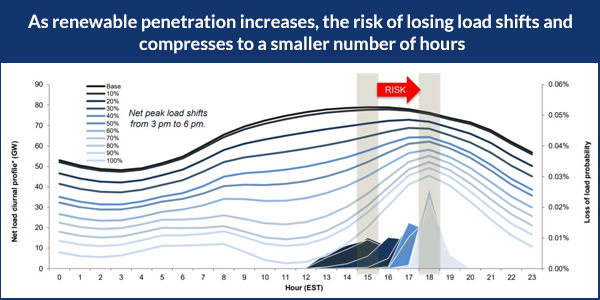By Amanda Durish Cook
MISO last week said its grid can currently sustain 20% renewable penetration without damaging frequency response, the latest findings from its ongoing renewable integration impact study.
The RTO in spring published study results showing that increased renewable integration — especially solar generation — will shift peak load to evening hours, with a spikier but shorter daily loss-of-load risk. (See MISO Renewable Study Predicts Later Peak, Narrower LOLE Risk.)
The same study now concludes that MISO can more than double its current 8% renewable share of the resource mix while still maintaining a satisfactory frequency performance. Frequency response decreases slightly but is steady up to a 20% renewable mix, with the system remaining stable after the simultaneous loss of large generators up to 4,500 MW, Jordan Bakke, MISO policy studies manager, said during an Oct. 5 Reliability Subcommittee meeting.
Some stakeholders said the study doesn’t contemplate that future storage resources could help improve frequency response.
“I think it’s important to point out that this study doesn’t include storage, and I think storage could really help the system,” said Dave Johnston, an Indiana Utility Regulatory Commission staffer.
Bakke said the study was conducted with the assumption that frequency response services will continue to go uncompensated.
“To the point we’ve gotten so far, storage hasn’t been needed to solve an identified [frequency response] issue,” Bakke said.
Early this year, FERC declined to order the RTO to compensate providers of primary frequency response, as Indianapolis Power and Light had requested. (See FERC OKs MISO Plan to Expand Storage.)
Coalition of Midwest Transmission Customers attorney Jim Dauphinais pointed out that FERC’s Order 842 requires new generators to be capable of providing primary frequency response as a condition of interconnection.
Bakke said MISO’s study did assume new generators “could provide it, but they won’t because there’s no incentive to provide.”
MISO will continue to work on its renewable integration study through early next year. Bakke said the RTO will likely convene a stakeholder workshop on study results so far in November.





